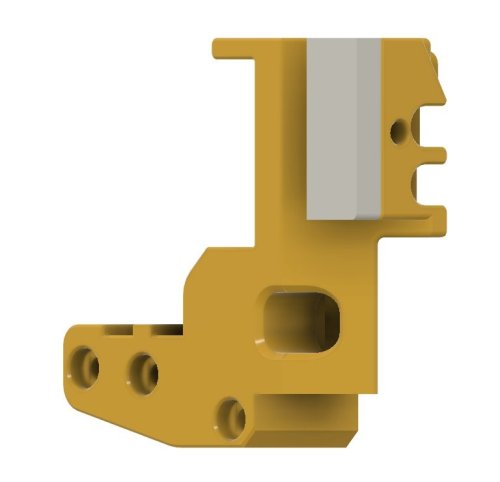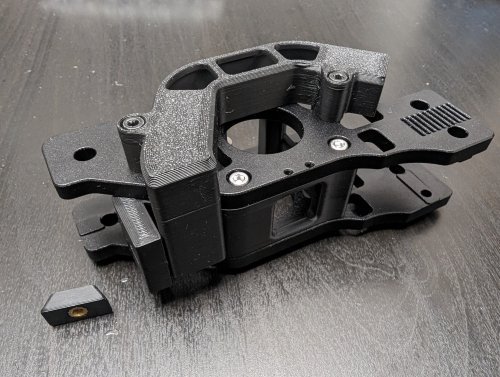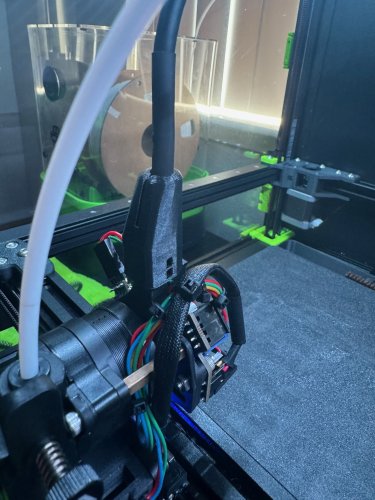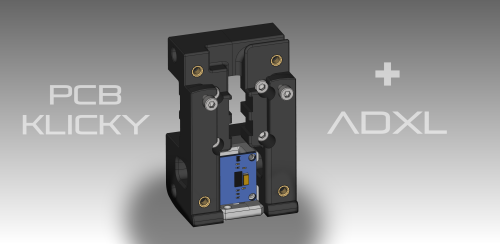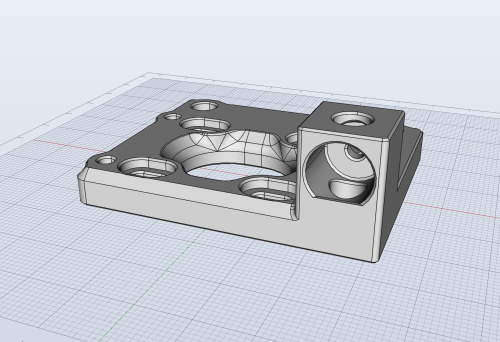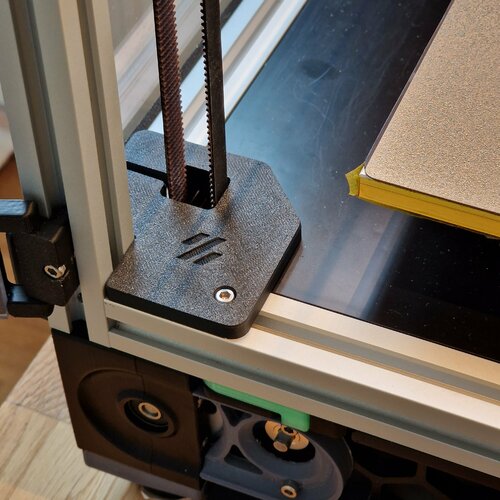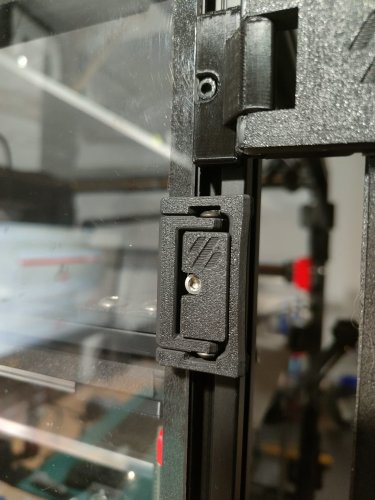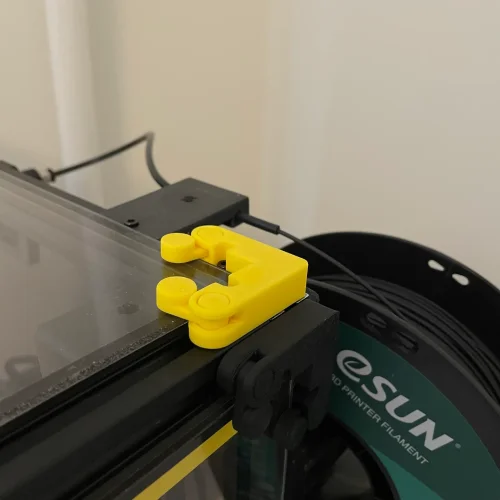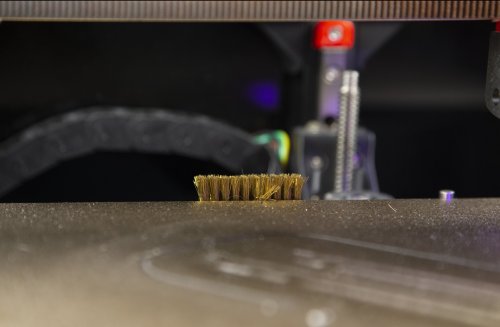-
TeamFDM.com is an UNOFFICIAL companion site for the DIY Voron 3D printer community. For official docs and final source of truth, visit the Official Voron Discord or the Voron Github
Printable Voron User Mods
Voron User Mods, or "UserMods", are a collection of community created and Team FDM curated modification for Voron Printers. All of these mods are available on the VoronUsers Github repo and unless otherwise specified follow the Voron communities GPL3.0 Licensing. Use any Mods at your own risk, if you make modification please share them on the VoronUsers repo.
Mod Authors: Have a Voron mod? Upload it at TeamFDM.com and let us know you're the author. We will ensure you can update and curate your files for more feedback! Please include tags for what Voron, or extruder your mod is compatible with.
640 files
-
Mini Stealth DAB - Beta Release
This x-carriage is designed as a nozzle probing option for mounting a Mini Stealth in a Voron Trident or V2.4. It uses a simple linear compliant mechanism to allow minimal Z travel while being quite rigid in the other five degrees of movement. Completely assembled including Z and X endstops it weighs in at 18g. It should require the same Print_Start preparations as the Voron TAP to ensure a clean nozzle and accurate probing.
On my Vorpal 180 printer I got sub 0.002mm probe_accuracy results while testing but this design does require a rigid gantry and print bed. While probing with a scale on top of the bed, it was reading up to 800g of force but this is not a very reliable measurement. The Vorpal printer has a PCB style bed and no 2020 profile for the gantry. I am working to rebuild the toolhead on my Trident to test the DAB but that uses a Prusa PCB bed as well.
There are breakable supports and bed adhesion aids (shown in green in the last picture) built into the .stl file. After printing, the flexure feature will need to be pried slightly to separate the center section from the bridge that the toolhead mounts to and allow movement. This is easier to do while the part is still warm from printing and a thin spudger can be useful.
I have added two sample flexures to demonstrate how the length of the web pieces effect the stiffness of the mechanism.
Parts Required:
Mini_Stealth_DAB_ver0.6
DAB_Z_Stop_Boss(X_Stop)
2 - M3 x 4 grub screws (not pointed)
4 - M2 x 10 self tapping screws (5 if X endstop)
1 - microswitch with lever removed
2 - M3 square nuts
4 - M3 x 12 BHCS
Assembly:
After ensuring that the flexure moves freely, install one of the grub screws in the top and screw it in just enough to remove the looseness in the flexure. This provides a known lower limit of travel. Install the Z_Stop_Boss with two M2 x 10 screws from the front. Then install the Z micro-switch with the red trigger on the left (viewed from the back). The wires can be fed to the front through the lower gap in the flexure. Install the other M3 grub screw on the bottom of the DAB_Z_Boss. Screw it in until you hear the micro-switch trigger and then turn it back out until the trigger releases. This makes the trigger travel distance less than 0.5mm. Mount the x-carriage to the MGN12C carriage with four M3x12 BHCS. There is room to pull the four belt ends through and trim them at the front face of the DAB. This design will now fit all of the Mini Stealth v2 variations. The extruders have each been raised as needed to avoid the prior collisions with the top of the flexure frame.
Stealthburner Version:
This version of the DAB is a drop-in replacement for the Stealthburner x-frame pieces. It uses slightly different hardware than the official Stealthburner assembly, as shown in the picture below.
Please leave comments, questions and feedback.
98 downloads
- voron
- stealthburner
- (and 4 more)
-
Mini Stealth - Orbiter 1.5
The Mini Stealth v2 toolhead is up on GitHub now. I will keep these files here as the new parts are not compatible with the v1.2.5 parts. I will support both versions in the comments here. I still need to create new assembly instructions but a lot of the steps are similar to what is described here.
---------------------------------------------------------------------------
This toolhead scales down the body of the Stealthburner to a size which fits into a V0.1/V0.2. Fully assembled it weighs about 80 grams less than the original. It is designed around the Orbiter 1.5 extruder and has versions for the Phaetus Dragonfly, Dragon and Rapido HF hotends as well as versions for the Mosquito and the Revo Voron hotends. It incorporates a status LED as well as two for print visibility.
There are now two hex pattern inlays based on the design by 3DP-MAMSIH and a tutorial on how to apply them to the shroud. The negative body feature of Prusa/Super Slicer can also be used to create a crop-top version of the shroud as described at the end of the tutorial.
I have added new stretched versions that should fit the Rapido UHF, Dragon UHF and the VolcoMosq hotends. The Dragon UHF and Rapido UHF hotends can fit in the same shroud. The UHF hotends will reduce Z travel by 8.5mm and the VolcoMosq by 3mm. I cannot verify the fitment so if there are any issues please leave a comment.
It uses a pair of 4010 blowers which I found to produce more airflow than a 5015 blower while being notably less noisy and drawing less current. The depth of these fans do limit Y travel by 3mm on a V0.1 while the door is closed and tophat is on. The width of the main body at its base is also a very tight fit at the extremes of X travel. I have raised my tophat by 20mm which gives the cabling and filament tube plenty of room to breathe. The shroud fits a 3010 hotend fan or a 3007 fan by using a clip-in adapter.
I have also installed this on my Trident. The included files do not address cable management on a Trident or V2.4 but do provide mounting to the MGN12 carriage. The cable chain on a Trident or V2.4 would have to be moved back at least 5mm to clear the extruder stepper motor. There is a separate 'strain_relief' stl for use in the V0.1. There are also x-frame pieces that allow this Mini Stealth to be installed on a Switchwire. The nozzle is moved up by 3mm compared to the official Switchwire due to the stepper motor being so low on the Orbiter extruder but this also allows a BL-Touch to fit into the x-frame pieces.
I have included a magnet mount and additional shroud .stl files to make this compatible with the ZeroClick mod. This toolhead also has versions that allow mounting a differential IR sensor. I have removed the mechanical Z endstop on my V0.1 and use the IR probe as an endstop and it has greatly simplified my homing sequence. There are additional x-frame pieces that allow mounting the Beacon3D probe, Euclid or Biqu MicroProbe for a V2.4, Trident or Switchwire.
The included Blender file shows the entire assembly complete with screws and should answer most basic questions.
Note on MGN-9 installation:
The default 2mm x 10 plastic threading screw is too long for mounting the x-axis endstop. An M2 x 8 does the job fine. For mounting to the linear carriage use four M3 x 6 flat-head screws.
Note: The MGN carriage shown is an MGN-9H, not the shorter MGN-9C used in the V0.1 mod.
Preparation
I recommend using a file to lightly remove any printing artifacts on the mating face of the shroud.
Use a small file to smooth out the break-off edges of the LED PCB and make sure the LED pockets are clear of 'droopy bits'
All three fans will need the wire retention piece clipped so the wires fit into the shroud channels easier.
Differential IR Probe Installation
The IR Probe needs to be screwed into place with two M2.5x8 FHCS before installing any of the fans, except with the VolcoMosq or UHF hotends where the probe needs to be glued on with CA glue. The Y-offset for this probe is 4mm in front of the nozzle and the X-offset is 32mm.
I strongly recommend removing the 3-pin header and soldering wires directly to the probe PCB.
When installed the wires will route out from the back of the IR probe cover to then join with the hotend and fan wires.
I have included a cover to allow a connector at the probe but the wire management will be less than ideal..
Assembly Instructions
After pressing the status LED diffuser into place, install the right part-cooling fan first by feeding the wires through the small hole at the bottom. Then feed the wires for the status LED and hotend fan through before starting to push the LED carrier into position.
Carefully push the status LED carrier as far as it will go and press the fan into position while making sure not to pinch the part-cooling fan wires. Then press the remaining LEDs into their slots. (I measure out 35mm of wire to connect these LEDs together)
Here is another view also showing where the hotend fan wires fit.
Insert the second part-cooling fan and splice the wires together with the first fan.
Install the hotend with at least two M2.5x6 screws (M3x6 for the Revo Voron). The heater cartridge should be installed away from the LEDs to avoid overheating them.
( ** don't forget the PTFE tube )
Gather the wires together and secure them with the first zip-tie.
(it helps to insert a snipped zip-tie through the the hole and yank it through with pliers to remove printing artifacts from inside of the channels)
Loop the wire bundle back around and add in the LED and hotend fan wires. Use two more zip-ties to secure everything in place. ENSURE to leave room for the extruder by lifting the loop of wires up and out of the way as shown. More space is much better than not enough. (Don't forget the PTFE tube)
Pre-assemble the extruder pieces before installing into the shroud. Use two M3x8 BHCS to install the Orbiter 1.5 extruder. It helps to have both screws in the Orbiter before putting it in place. Start the screw by the latch and then the blind screw should be easier to align.
Gather all of the wires together and then use a zip-tie to secure them to the motor-bridge. Leave a little slack in the extruder wires.
Install the strain_relief with two M3x6/8 screws and the cable_door with a M3x10/12 screw.
Close the cable door with a M3x6 screw and screw in the extruder tensioning thumb screw.
Use two M3x40 BHCS to secure the toolhead to the x-carriage in a V0.1/V0.2. For installation in a Trident or V2.4 use two M3x50 BHCS.
Happy Printing!
13,137 downloads
-
Mini Stealth - LGX Lite
The Mini Stealth v2 toolhead is up on GitHub now. I will keep these files here as the new parts are not compatible with the v1.2.5 parts. I will support both versions in the comments here. I still need to create new assembly instructions but a lot of the steps are similar to what is described here.
---------------------------------------------------------------------------
This toolhead scales down the body of the Stealthburner to a size which fits into a V0.1/V0.2. Fully assembled it weighs about 120 grams less than the original. It is designed around the Bondtech LGX Lite extruder and has versions for the Phaetus Dragonfly, Dragon and Rapido HF hotends as well as versions for the Mosquito, the Revo Voron and the Creality Spider Pro hotends. It incorporates a status LED as well as two for print visibility.
I have added new stretched versions that should fit the Rapido UHF, Dragon UHF and the VolcoMosq hotends. The Dragon UHF and Rapido UHF hotends can fit in the same shroud. The UHF hotends will reduce Z travel by 8.5mm and the VolcoMosq by 3mm. I cannot verify the fitment so if there are any issues please leave a comment.
There are now two hex pattern inlays based on the design by 3DP-MAMSIH and a tutorial on how to apply them to the shroud. The negative body feature of Prusa/Super Slicer can also be used to create a crop-top version of the shroud as described at the end of the tutorial.
The shroud uses a pair of 4010 blowers which produce more airflow than a 5015 blower while also being notably less noisy and drawing less current. The depth of these fans do limit Y travel by 3mm on a V0.1 while the door is closed and tophat is on. The width of the main body at its base is also a very tight fit at the extremes of X travel. The shroud fits a 3010 hotend fan or a 3007 fan by using a clip-in adapter.
The Mini Stealth LGX Lite fits well in a V2.4 or Trident and modified x-frame left and right pieces are included. There is a separate 'strain_relief' stl for use in the V0.1. There are also x-frame pieces that allow this Mini Stealth to be installed on a Switchwire. The nozzle is moved up by 3mm compared to the official Switchwire. The x-frame has geometry that allows a BL-Touch to fit locked between the two pieces.
I have included a magnet mount and additional shroud .stl files to make this compatible with the ZeroClick mod. This toolhead also has versions that allow mounting a differential IR sensor. I have removed the mechanical Z endstop on my V0.1 and use the IR probe as an endstop and it has greatly simplified my homing sequence. There are additional x-frame pieces that allow mounting the Beacon3D probe, Euclid or Biqu MicroProbe for a V2.4, Trident or Switchwire.
The included Blender file shows the entire assembly complete with screws and should answer most basic questions.
Note on MGN-9 installation:
The default 2mm x 10 plastic threading screw is too long for mounting the x-axis endstop. An M2 x 8 does the job fine. For mounting to the linear carriage use four M3 x 6 flat-head screws.
Note: The MGN carriage shown is an MGN-9H, not the shorter MGN-9C used in the V0.1 mod.
Preparation
I recommend test fitting the extruder, LGX_lite_adapter_plate, PTFE tube and hotend into the shroud before running any wires to ensure that the PTFE tube length is correct and everything fits. It helps to chamfer the edge of the tube with a sharp blade so that it doesn't snag in the hotend.
I is a good idea to use a file to lightly remove any printing artifacts on the mating face of the shroud.
All three fans will need the wire retention piece clipped so the wires fit into the shroud channels easier.
Use a small file to smooth out the break-off edges of the LED PCB and make sure the LED pockets are clear of 'droopy bits'
Differential IR Probe Installation
The IR Probe needs to be screwed into place with two M2.5x8 FHCS before installing any of the fans, except with the VolcoMosq or UHF hotends where the probe needs to be glued on with CA glue. The Y-offset for this probe is 4mm in front of the nozzle and the X-offset is 32mm.
I strongly recommend removing the 3-pin header and soldering wires directly to the probe PCB.
When installed the wires will route out from the back of the IR probe cover to then join with the hotend and fan wires.
I have included a cover to allow a connector at the probe but the wire management will be less than ideal..
Assembly Instructions
After pressing the status LED diffuser into place, install the right part-cooling fan first by feeding the wires through the small hole at the bottom. Then feed the wires for the status LED and hotend fan through before starting to push the LED carrier into position.
Carefully push the status LED carrier as far as it will go and press the fan into position while making sure not to pinch the part-cooling fan wires. Then press the remaining LEDs into their slots. (I measure out 35mm of wire to connect these LEDs together)
Here is another view also showing how the hotend fan wires fit through the hole on the side of the status LED carrier.
Insert the second part-cooling fan and splice the wires together with the first fan.
Install the hotend with at least two M2.5x6 screws (M3x6 for the Revo Voron). The heater cartridge should be installed away from the LEDs to avoid overheating them.
( ** don't forget the PTFE tube )
Pre-assemble the extruder pieces before installing into the shroud. Use M3x30 screws to attach motor_bridge.
Install the extruder with an M3x6 BHCS on the back and then an M3x12 from below.
Ensure the cables are routed as flat to the shroud as possible and secure them with zip ties.
Install the strain_relief or cable_chain_mount with two M3x8 screws and the cable_door with another M3x8 screw. Close the cable door with an M3x6 screw.
Use two M3x40 BHCS to secure the toolhead to the x-carriage in a V0.1/V0.2. For installation in a Trident or V2.4 use two M3x50 BHCS.
Happy Printing!
21,564 downloads
- lgx lite
- stealthburner
- (and 19 more)
-
Mini Stealth - Mini Sherpa
The Mini Stealth v2 toolhead is up on GitHub now. I will keep these files here as the new parts are not compatible with the v1.2.5 parts. I will support both versions in the comments here. I still need to create new assembly instructions but a lot of the steps are similar to what is described here.
---------------------------------------------------------------------------
This toolhead scales down the body of the Stealthburner to a size which fits into a V0.1/2. Fully assembled it weighs less than 260 grams. It is designed around the Mini Sherpa extruder and has versions for the Phaetus Dragonfly, Dragon and Rapido HF hotends as well as versions for the Mosquito, the Revo Voron and the Creality Spider Pro hotends. It incorporates a status LED as well as two for print visibility.
I have also added stretched versions that should fit the Rapido UHF, Dragon UHF and the VolcoMosq hotends. The Dragon UHF and Rapido UHF hotends can fit in the same shroud. The UHF hotends will reduce Z travel by 8.5mm and the VolcoMosq by 3mm. I cannot verify the fitment so if there are any issues please leave a comment.
There are now two hex pattern inlays based on the design by 3DP-MAMSIH and a tutorial on how to apply them to the shroud. The negative body feature of Prusa/Super Slicer can also be used to create a crop-top version of the shroud as described at the end of the tutorial.
The shroud uses a pair of 4010 blowers which produce more airflow than a 5015 blower while also being notably less noisy and drawing less current. The depth of these fans do limit Y travel by 3mm on a V0.1 while the door is closed and tophat is on. The width of the main body at its base is also a very tight fit at the extremes of X travel. The shroud fits a 3010 hotend fan or a 3007 fan by using a clip-in adapter.
This Mini Stealth - Mini Sherpa also fits well in a V2.4 or Trident and modified x-frame left and right pieces are included. There are cable chain mounts as well as strain_relief and umbilical_PCB mount for use in the V0.1. There are additional x-frame pieces that allow this Mini Stealth to be installed on a Switchwire. The nozzle is moved up by 3mm compared to the official Switchwire. The x-frame has geometry that allows a BL-Touch to fit locked between the two pieces.
I have included a magnet mount and additional shroud .stl files to make this compatible with the ZeroClick mod. This toolhead also has versions that allow mounting a differential IR sensor. I have removed the mechanical Z endstop on my V0.1 and use the IR probe as an endstop and it has greatly simplified my homing sequence. There are additional x-frame pieces that allow mounting the Beacon3D probe, Euclid or Biqu MicroProbe for a V2.4, Trident or Switchwire.
The included Blender file shows the entire assembly complete with screws and should answer most basic questions.
Note on MGN-9 installation:
The default 2mm x 10 plastic threading screw is too long for mounting the x-axis endstop. An M2 x 8 does the job fine. For mounting to the linear carriage use four M3 x 6 flat-head screws.
Note: The MGN carriage shown is an MGN-9H, not the shorter MGN-9C used in the V0.1 mod.
Preparation
I recommend using a file to lightly remove any printing artifacts on the mating face of the shroud.
Use a small file to smooth out the break-off edges of the LED PCB and make sure the LED pockets are clear of 'droopy bits'
All three fans will need the wire retention piece clipped so the wires fit into the shroud channels easier.
Differential IR Probe Installation
The IR Probe needs to be screwed into place with two M2.5x8 FHCS before installing any of the fans, except with the VolcoMosq or UHF hotends where the probe needs to be glued on with CA glue. The Y-offset for this probe is 4mm in front of the nozzle and the X-offset is 32mm.
I strongly recommend removing the 3-pin header and soldering wires directly to the probe PCB.
When installed the wires will route out from the back of the IR probe cover to then join with the hotend and fan wires.
I have included a cover to allow a connector at the probe but the wire management will be less than ideal..
Assembly Instructions
After pressing the status LED diffuser into place, install the right part-cooling fan first by feeding the wires through the small hole at the bottom. Then feed the wires for the status LED and hotend fan through before starting to push the LED carrier into position.
Carefully push the status LED carrier as far as it will go and press the fan into position while making sure not to pinch the part-cooling fan wires. Then press the remaining LEDs into their slots. (I measure out 35mm of wire to connect these LEDs together)
Here is another view also showing how the hotend fan wires fit through the hole on the side of the status LED carrier.
Insert the second part-cooling fan and splice the wires together with the first fan.
Install the hotend with at least two M2.5x6 screws (M3x6 for the Revo Voron). The heater cartridge should be installed away from the LEDs to avoid overheating them.
( ** don't forget the PTFE tube )
Pre-assemble the extruder with your chosen cable management using M3x20 BHCS before installing into the shroud.
Install the extruder with two M3x8 BHCS. Make sure that the LED and fan wires route around and exit behind the extruder. They can even fit in the gap below the extruder as shown in the picture.
Gather the wires together with zip ties and secure them up to the cable management piece. Do your best to keep them tucked in close at the base of the extruder. I used a temporary zip tie at the top to keep the wires manageable until I installed the toolhead in the printer.
The top of the cable door hooks under the back of the shroud and then you can use 2 - M3x6 BHCS to secure the cable door in place.
Use two M3x40 BHCS to secure the toolhead to the x-carriage in a V0.1/V0.2. For installation in a Trident or V2.4 use two M3x50 BHCS.
Happy Printing!
21,435 downloads
- mini sherpa
- stealthburner
- (and 16 more)
-
Mini Stealth - Orbiter 2.0
The Mini Stealth v2 toolhead is up on GitHub now. I will keep these files here as the new parts are not compatible with the v1.2.5 parts. I will support both versions in the comments here. I still need to create new assembly instructions but a lot of the steps are similar to what is described here.
---------------------------------------------------------------------------
This toolhead scales down the body of the Stealthburner to a size which fits into a V0.1/V0.2. Fully assembled it weighs about 110 grams less than the original. It is designed around the Orbiter 2.0 extruder and has versions for the Phaetus Dragonfly, Dragon and Rapido HF hotends as well as versions for the Mosquito, the Revo Voron and the Creality Spider Pro hotends. It incorporates a status LED as well as two for print visibility.
I have added new stretched versions that should fit the Rapido UHF, Dragon UHF and the VolcoMosq hotends. The Dragon UHF and Rapido UHF hotends can fit in the same shroud. The UHF hotends will reduce Z travel by 8.5mm and the VolcoMosq by 3mm. I cannot verify the fitment so if there are any issues please leave a comment.
There are now two hex pattern inlays based on the design by 3DP-MAMSIH and a tutorial on how to apply them to the shroud. The negative body feature of Prusa/Super Slicer can also be used to create a crop-top version of the shroud as described at the end of the tutorial.
The Mini Stealth uses a pair of 4010 blowers which produce more airflow than a 5015 blower while being notably less noisy and drawing less current. The depth of these fans do limit Y travel by 3mm on a V0.1 while the door is closed and tophat is on. The width of the main body at its base is also a very tight fit at the extremes of X travel. I have raised my tophat by 20mm which gives the cabling and filament tube plenty of room to breathe. The shroud fits a 3010 hotend fan or a 3007 fan by using a clip-in adapter.
This Orbiter 2.0 Mini Stealth is a better fit than the Orbiter 1.5 Mini Stealth in a V2.4 or Trident as the motor no longer interferes with the path of the cable chain. There is a separate 'strain_relief' stl for use in the V0.1. There are also x-frame pieces that allow this Mini Stealth to be installed on a Switchwire. The nozzle is moved up by 3mm compared to the official Switchwire due to the stepper motor being so low on the Orbiter extruder but this also allows a BL-Touch to fit into the x-frame pieces.
I have included a magnet mount and additional shroud .stl files to make this compatible with the ZeroClick mod. This toolhead also has versions that allow mounting a differential IR sensor. I have removed the mechanical Z endstop on my V0.1 and use the IR probe as an endstop and it has greatly simplified my homing sequence. There are additional x-frame pieces that allow mounting the Beacon3D probe, Euclid or Biqu MicroProbe for a V2.4, Trident or Switchwire.
The included Blender file shows the entire assembly complete with screws and should answer most basic questions.
Note on MGN-9 installation:
The default 2mm x 10 plastic threading screw is too long for mounting the x-axis endstop. An M2 x 8 does the job fine. For mounting to the linear carriage use four M3 x 6 flat-head screws.
Note: The MGN carriage shown is an MGN-9H, not the shorter MGN-9C used in the V0.1 mod.
Preparation
I recommend using a file to lightly remove any printing artifacts on the mating face of the shroud.
Use a small file to smooth out the break-off edges of the LED PCB and make sure the LED pockets are clear of 'droopy bits'
All three fans will need the wire retention piece clipped so the wires fit into the shroud channels easier.
Differential IR Probe Installation
The IR Probe needs to be screwed into place with two M2.5x8 FHCS before installing any of the fans, except with the VolcoMosq or UHF hotends where the probe needs to be glued on with CA glue. The Y-offset for this probe is 4mm in front of the nozzle and the X-offset is 32mm.
I strongly recommend removing the 3-pin header and soldering wires directly to the probe PCB.
When installed the wires will route out from the back of the IR probe cover to then join with the hotend and fan wires.
I have included a cover to allow a connector at the probe but the wire management will be less than ideal..
Assembly Instructions
After pressing the status LED diffuser into place, install the right part-cooling fan first by feeding the wires through the small hole at the bottom. Then feed the wires for the status LED and hotend fan through before starting to push the LED carrier into position.
Carefully push the status LED carrier as far as it will go and press the fan into position while making sure not to pinch the part-cooling fan wires. Then press the remaining LEDs into their slots. (I measure out 35mm of wire to connect these LEDs together)
Here is another view also showing where the hotend fan wires fit.
Insert the second part-cooling fan and splice the wires together with the first fan.
Install the hotend with at least two M2.5x6 screws (M3x6 for the Revo Voron). The heater cartridge should be installed away from the LEDs to avoid overheating them.
(** don't forget the PTFE tube)
Pre-assemble the extruder pieces before installing into the shroud. Use two M3x8 BHCS to install the Orbiter 2.0 extruder. It helps to have both screws in the Orbiter before putting it in place. Start the screw by the latch and then the blind screw should be easier to align.
Gather all of the wires together with a zip-tie next to the base of the Orbiter latch and then use another zip-tie to secure the wires to the motor-bridge. Leave a little slack in the extruder wires.
Install the strain_relief or cable_chain_mount with two M3x6/8 screws and the cable_door with a M3x10/12 screw. Close the cable door with a M3x6 BHCS and screw in the extruder tensioning thumb screw.
Use two M3x40 BHCS to secure the toolhead to the x-carriage in a V0.1/V0.2. For installation in a Trident or V2.4 use two M3x50 BHCS.
Happy Printing!
44,958 downloads
- orbiter 2.0
- v0.1
- (and 16 more)
-
Trident Chamber Heater Mount
I wanted to reach ABS/ASA temperatures faster, and be able to maintain 55-60°C for those larger warp-prone prints, so I designed this chamber heater mount.
If you're going to attempt this, make sure to use a temperature fuse to protect your printer (and your house) from burning down in the event of failure/over-heating.
I used 2x 3mmx5mm long heatserts inserted from the front, and 3mmx12mm screws to attach the heater.
4x 3mm t-nuts and 4x 3mmx10mm screws are required for mounting the bracket.
I used this 120VAC 250W heater (with 12VDC fan): https://www.amazon.ca/dp/B07NYX5DKD?psc=1&ref=ppx_yo2ov_dt_b_product_details
I used this SSR: https://www.amazon.ca/dp/B06WLNHPWK?psc=1&ref=ppx_yo2ov_dt_b_product_details
I loosely followed the chamber heater post from @ahough, and this would've been way harder (nigh impossible) without their post and the comments section. Notable mention goes out to @Dousi as well, since I copied and modified their config example to use as my own.
I hope the configs below help someone else along their way.
********
******** Here is my chamber heater section within my printer.cfg file:
********
#####################################################################
# CHAMBER HEATER
#####################################################################
[thermistor chamber_thermistor] #define "chamber_thermistor" characteristics
temperature1: 25
resistance1: 100000
beta: 3950
[thermistor heater_thermistor] #define "heater_thermistor" characteristics
temperature1: 0.0
resistance1: 32116.0
temperature2: 40.0
resistance2: 5309.0
temperature3: 80.0
resistance3: 1228.0
[temperature_sensor heater_temp] #this is the temp sensor for the 10K probe inserted in the heater core
sensor_type: heater_thermistor #use temp sensor characteristics as defined in "heater_thermistor"
sensor_pin: PA2 #Manta 8P temp sensor input pin. This temp probe is glued to the heater core with UV resin
min_temp: -100 #set minimum temp before error/shutdown
max_temp: 140 #SAFETY max heater core temperature, printer will shutdown above this temp
[heater_generic chamber_heater] #setup chamber heater
heater_pin: PE3 #Manta 8P heater output pin to SSR. This temp probe is mounted near the top of my chamber
sensor_type: chamber_thermistor #use temp sensor characteristics as defined in "chamber_thermistor"
sensor_pin: PA1 #Manta *P temp sensor input pin
control: watermark #use watermark control method (on/off)
max_delta: 0.1 #set the delta temp to energize/deenergize chamber heater
max_power: 1.0 #set maximum power of heater 1.0 = 100%
min_temp: -100 #set minimum temp before error/shutdown
max_temp: 70 #SAFETY max chamber temperature, printer will shutdown above this temp
pwm_cycle_time: 0.01666 #Set this to avoid room lights flickering on higher power heaters. This value works well for 60Hz power. 0.1 is 10Hz
[verify_heater chamber_heater] #setup chamber heater verification parameters
max_error: 120
check_gain_time: 240
hysteresis: 5
heating_gain: 1
[heater_fan heater_fan] #setup fan attached to back of chamber heater
pin: PE4 #Manta 8P fan output pin. Jumper selected for 12V
max_power: 1.0 #set maximum power of fan 1.0 = 100%
heater: chamber_heater #when "chamber_heater" is ON fan will be ON
heater_temp: 30 #fan will turn off below this level
#####################################################################
# MACROS
#####################################################################
[gcode_macro M191]
gcode:
{% set S = params.S | default(0) | float %}
SET_HEATER_TEMPERATURE HEATER=chamber_heater TARGET={S}
M118 Chamber heating to {S}C
M118 Waiting for chamber heating...
TEMPERATURE_WAIT SENSOR="heater_generic chamber_heater" MINIMUM={S}
M118 Chamber heating {S}C is done.
********
******** I also run Ellis' bedfans, and modified bedfans.cfg, "Command overrides" section to the below:
********
############ Command overrides ############
# Override, set fan speeds to low and start monitoring loop.
[gcode_macro SET_HEATER_TEMPERATURE]
rename_existing: _SET_HEATER_TEMPERATURE
gcode:
# Parameters
{% set HEATER = params.HEATER|default("None") %}
{% set TARGET = params.TARGET|default(0)|int %}
# Vars
{% set THRESHOLD = printer["gcode_macro _BEDFANVARS"].threshold|int %}
{% if HEATER|lower == "extruder" %}
M104 S{TARGET}
{% elif HEATER|lower == "heater_bed" %}
M99140 S{TARGET}
{% elif HEATER|lower == "chamber_heater" %}
_SET_HEATER_TEMPERATURE HEATER=chamber_heater TARGET={TARGET}
{% else %}
{action_respond_info("Heater %s not supported" % HEATER)}
{% endif %}
# Set fans to low if heater_bed temp is requested above threshold temp, and kick off monitoring loop.
{% if HEATER|lower == "heater_bed" %}
{% if TARGET >= THRESHOLD %}
BEDFANSSLOW
UPDATE_DELAYED_GCODE ID=bedfanloop DURATION=1
{% else %}
BEDFANSOFF
UPDATE_DELAYED_GCODE ID=bedfanloop DURATION=0 # Cancel bed fan loop if it's running
{% endif %}
{% endif %}
********
******** II then modified my PRINT_START macro to include the chamber heater stuff as seen below:
********
[gcode_macro PRINT_START]
# Use PRINT_START for the slicer starting script - PLEASE CUSTOMISE THE SCRIPT
gcode:
EXCLUDE_OBJECT_DEFINE
BED_MESH_PROFILE load=default
# Load variables
{% set bed_temp = params.BED|default(60)|int %}
{% set extruder_temp = params.EXTRUDER|default(230)|int %}
{% set CHAMBER_TEMP = params.CHAMBER|default(20)|float %}
M104 S150 #start nozzle heating, keep below oozing temp
M117 Extruder Heating...
M140 S{bed_temp} #set bed temp to "bed_temp" and move on
M117 Bed Heating....
M190 S{bed_temp} #allow bed to get up to temperature
M117 Heating Chamber...
M191 S{CHAMBER_TEMP}
G90 #Use absolute coordinates
M117 Homing...
G28
M117 Adjusting Z Tilt...
Z_TILT_ADJUST
G28
M117 Calibrating Bed Mesh...
BED_MESH_CALIBRATE
M117 Waiting for Extruder to Reach Printing Temperature...
M109 S{extruder_temp}
G92 E0 #Reset exruder
M117 Purging Filament...
ADAPTIVE_PURGE
M117
********
******** I use CURA and this is my Start Gcode as defined within Cura:
********
;Nozzle diameter = {machine_nozzle_size}
;Filament type = {material_type}
;Filament name = {material_name}
M204 P500.00 R1000.00 T500.00 ;Setup Print/Retract/Travel acceleration
M220 S100 ;Reset Feedrate
M221 S100 ;Reset Flowrate
M117
PRINT_START EXTRUDER={material_print_temperature_layer_0} BED={material_bed_temperature_layer_0} CHAMBER={build_volume_temperature}
13 downloads
-
MKS TS35 Screen Front Panel
A front mount for MKS TS35 screen for the Voron Trident machine. It was designed as drop in replacement of Mini 12864 holder and has only one single printed part.
The MKS TS35 is larger than the Mini 12864 one, so the panel is 4mm taller and slightly sloped. This should not be a problem neither for bottom panel sheet nor for doors.
There are two versions:
a 117 mm width which is default Voron Trident size a 122 mm width which help me to reduce gaps between front panel components. Please choose whichever option suits you best.
The part should be printed with Voron recommended settings. Before installing the display, please remove two small supports near the bottom clip and check the size of the window cut (the display has a fairly tight fit). The display is secured with two M3 bolts/nut of suitable length (e.g. M3x8).
4 downloads
(0 reviews)0 comments
Updated
-
v2.4 Chamber Heater
I was having trouble getting my enclosure temperatures above 45C to achieve my optimum print settings. This is the solution I came up with to solve my enclosure temperature issues. I'm running a Fystec Spider v1.1, so your printer config would likely differ. I'm also using a Hartk v4.0 PCB that has an integrated chamber thermistor. I've included my settings for this as well, but you may need to change this up if you use a different thermistor for enclosure temperature readings.
I hope this is helpful for someone. I couldn't find a lot of solutions out on the net that could get me up and going with a setup like this, so it was a lot of trial and error to get to this point. Let me know if you have any comments or suggestions that can help me make this thing better!
How I set things up:
I removed the fan from the PTC heater and inserted a 100K NTC thermistor into one of the bordering fins on the heater core. I then filled the remaining gap in the fin with thermal grease and reattached the fan. I added a thermal fuse to make sure the power would get cut if the temperatures get out of hand from a bad config or faulty piece of hardware. First I drilled a 1/8" hole next to the center ground pin, rivetted the fuse to the heater's core, and applied thermal grease between the fuse body and the heater core. I then moved the ground wire to run from the fuse rather than the tab. Once I wired this up, I ran the temperatures up past the fuse limits to verify things fail safely as expected. I then replaced the fuse after test failed as expected. I extended all of the wiring with solder connections to make sure it would be long enough reach each wire's intended destination, and capped each connection with heat shrink. I mounted the PTC heater to the printed PTC heater mount and ran the wires to the wiring compartment. I installed the Omron relay, and ran a 24v output from my controller to the relay's 5-24v input. I then routed 110v AC to the other end of the relay on the hot lead. I finished up the wiring by hooking up the 12v line for the heater fan and the heater thermistor to the controller board. (Note: my chamber thermistor was already installed on my toolhead's PCB) I updated my printer.cfg and ran a bunch of tests on the heater to make sure it was functioning properly. BOM:
Electronics:
- PTC Heater w/ Fan x1 - Item on Amazon
- NTC 100k thermistor - Item on Amazon
- 120C Thermal Fuse - Item on Amazon
- Omron 5-24v Relay - Item on West3D
Printed Parts:
- Printed PTC Heater Mount x1
Miscellaneous:
- M3x8mm SHCS x2
- M3 T-nut x2
- 18awg stranded wire ~2 meters
- 22awg stranded wire ~2 meters
- 1/8" Rivet x1
- Appropriate connectors for you controller board
Changes to printer.cfg:
###################### ### Chamber Heater ### ###################### [heater_generic chamber_heater] heater_pin: PC8 sensor_type: Generic 3950 sensor_pin: PC2 control: watermark max_power: .5 min_temp: 0 max_temp: 110 [verify_heater chamber_heater] max_error: 120 check_gain_time: 120 hysteresis: 5 heating_gain: 2 ########################## ### Chamber Heater Fan ### ########################## [heater_fan chamber_heater_fan] pin: PB6 max_power: 1.0 heater: chamber_heater heater_temp: 40.0 # fan will turn off below this level ############################# ### Enclosure Temperature ### ############################# [thermistor chamber_thermistor] temperature1: 25 resistance1: 10000 beta: 3950 [temperature_sensor enclosure_temp] sensor_type: chamber_thermistor sensor_pin: PC1 min_temp: 0 max_temp: 80
Macro:
You can run this and immediately start your print. The print wont actually start until the specified chamber temperatures are reached.
[gcode_macro CHAMBER_TEMP_WAIT] gcode: {% if params.MIN_TEMPERATURE and params.MAX_TEMPERATURE and params.MIN_TEMPERATURE|float > params.MAX_TEMPERATURE|float %} {action_raise_error("Chamber Temp Wait: MIN_TEMPERATURE must be less than or equal to MAX_TEMPERATURE Use: - CHAMBER_TEMP_WAIT MIN_TEMPERATURE=[0..80] - CHAMBER_TEMP_WAIT MAX_TEMPERATURE=[0..80] - CHAMBER_TEMP_WAIT MIN_TEMPERATURE=[0..80] MAX_TEMPERATURE=[0..80]")} {% elif params.MIN_TEMPERATURE and params.MIN_TEMPERATURE|float > -1 and params.MIN_TEMPERATURE|float < 81 %} {% if params.MAX_TEMPERATURE and params.MAX_TEMPERATURE|float > -1 and params.MAX_TEMPERATURE|float < 81 %} TEMPERATURE_WAIT SENSOR="temperature_sensor enclosure_temp" MINIMUM={params.MIN_TEMPERATURE|float} MAXIMUM={params.MAX_TEMPERATURE|float} {% else %} TEMPERATURE_WAIT SENSOR="temperature_sensor enclosure_temp" MINIMUM={params.MIN_TEMPERATURE|float} {% endif %} {% elif params.MAX_TEMPERATURE and params.MAX_TEMPERATURE|float > -1 and params.MAX_TEMPERATURE|float < 81 %} TEMPERATURE_WAIT SENSOR="temperature_sensor enclosure_temp" MAXIMUM={params.MAX_TEMPERATURE|float} {% else %} {action_raise_error("Chamber Temp Wait: invalid usage Use: - CHAMBER_TEMP_WAIT MIN_TEMPERATURE=[0..80] - CHAMBER_TEMP_WAIT MAX_TEMPERATURE=[0..80] - CHAMBER_TEMP_WAIT MIN_TEMPERATURE=[0..80] MAX_TEMPERATURE=[0..80]")} {% endif %}
Updates:
- I added a photo of how this is wired up in the wiring compartment. The boxes with the text in the photo represent the components of the heater that are in the chamber of the printer.
- I have included the macro to wait for chamber to reach temps before starting a print.
- I have attached the heater mount's fusion 360 file for others to be able to easily make edits to the chamber heater mount
Chamber Heater Mount v2.f3d
538 downloads
- chamber heater
- heater
- (and 1 more)
-
Voron BTT Pi v1.2 Din Rail Mount
This is a design based off the Voron Pi mount for the BTT Pi v1.2 to use on Voron printers where you want to use the BTT Pi instead of the regular Pi boards.
30 downloads
(0 reviews)0 comments
Submitted
-
(0 reviews)
0 comments
Updated
-
Sherpa Micro Vz RIDGA + CW2 Module
This remix of the Sherpa Micro extruder uses the RIDGA gears from a Vz Hextrudort. Other than using 'twirl' gears, they are also 5mm shorter than the standard Bondtech gears which solves the collision that a stock Sherpa has with the 5015 blower in a Stealthburner.
I mirrored the extruder about the Y axis to put the tensioning screw on the left side and added a filament release lever since the idler_arm is not accessible when installed in a Steathburner. This requires a modified idler_arm for ridgidity. I have also added a shield over the 50t gear to protect the toolhead wiring.
This design fits the official Stealthburner_main_body as well as the official cable_door. The cable chain mounts were adjusted to clear the stepper motor but otherwise remain stock. Below is a list of the hardware that differs from a standard Stealthburner CW2 install.
1 - Mellow CNC Vz HextrudORT drive gears Set 7
2 - M3x25 screws below extruder (from the front)
1 - M2x10 self tapping screw at the top (from behind)
2 - M3x12 screws to secure extruder
1 - M3x10 screw to attach filament release lever
The Sherpa Micro Vz RIDGA will need some basic components from a BMG Dual Drive kit.
2 - MR85 bearings
1 - Thumbscrew with tensioning spring and washer
2 - 3mm steel pins for idler_arm pivot and idler gear
The included .blend file shows the complete CW2 assembly with hardware. You can select any part and press [H] to hide it. Pressing [Alt] + [H] shows everything again. Pressing [F2] while a part is selected brings up the Rename dialog so you can see the name of each component i.e. "M3x25_BHCS".
I have included .stl files for building a standard Sherpa Micro, with standard BMG gears, but adding the filament_release_lever. The files added here are mirrored to put the tension screw on the left but can each be mirrored back in the slicer to match the official orientation. Below is a list of the parts required:
1 - Sherpa_Micro_VzRIDGA_Back_v1.1.stl
1 - Sherpa_Micro_Core_mirrored.stl (official geometry mirrored)
1 - Sherpa_Micro_VzRIDGA_Front.stl (official geometry mirrored)
1 - Sherpa_Micro_Idler_Arm_FR-Lever_mirrored.stl
1 - Sherpa_Micro_VzRIDGA_Filament_Release_Lever.stl
The extruder parts are licensed under the Annex Engineering License and the Clockwork 2 parts are licensed under the GPL v3 License.
201 downloads
- stealthburner
- clockwork2
- (and 1 more)
-
CATPAW Voron ZERO toolhead Orbiter 2.0 - CAN - Neopixel - Probe - Filament Sensor - 2x4010 - 1x3010
CatPaw is the ideal toolhead for Voron Zero series with Orbiter 2.0 Extruder. I developed this toolhead as I was unhappy with the existing options. The standard Voron Zero 0.2 toolhead does not provide as much cooling as I prefer, and certainly less than the StealthBurner toolhead. My design goals were also minimum loss of print volume and maximum compatibility with toolheads and options for probe and filament sensor.
CATPAW:
Uses Voron Zero 0.2 toolhead cartridges, so should work with all toolheads for voron Zero 0.2 (fan saver recommended) 2x 4010 Blowers, with StealthBurner duct layout for near arctic level part cooling (2x 4010 provides more air than StealthBurner toolhead) Almost no loss in print volume. X axis should be full width, loss off a millimeter or so on X if you print with your door closed. (Magnets on my door are strong enough, so the door closes again if the toolhead bumps into it, giving me the full 120x120 mm even when printing ABS Option to add the slideswipe Probe. I shortened the probe, but all other parts can be used from https://github.com/SaltyPaws/Voron_0.1and0.2mods/SlideSwipe or original repo (https://github.com/chestwood96/SlideSwipe) Option to add under extruder filament Sensor Carriages are provided for MGN7 and MGN9 X-axis rails. It is recommended to print the provided X carriage for the appropriate rail. In order to minimize toolhead height, I lowered the screw hole for the rear mounting screw. The CATPAW toolhead will work with the stock Voron Zero 0.2 Carriage, but the screw securing the X-carriage from the rear will not fit. https://github.com/SaltyPaws/CATPAW_toolhead/raw/main/images/PXL_20240101_224037977.jpg?raw=true
BOM
2x SHCS (preferred) or BHSC M3x25 bolt 3x M3 nut 2x NeoPixel 1x 3010 hotend fan 2x 4010 Blower 6x3mm magnets for probe (optional) 6mm steel ball for filament sensor (optional) Omron D2F-L micro-switch with lever for filament sensor (optional) 2x M2x12 or self-tapping screw to secure micro-switch (optional) Installation Instructions
Assembly should be done in the following order: Probe
Solder wires to 6x3mm magnets. In order to prevent loss of magnetism, let the magnets cool against another 6x3 magnet. Press the magnets into the slots by pushing the toolhead down on a hard object. Use a large flat soldering tip at around 230C to push the magnets deeper into the slots, you want the magnets to stick out ~0.5 to 1 mm. Again, let the magnets cool down attached to other magnets to prevent loss of magnetism. Ensure wire to magnet path has very low resistance (less than 4 ohm). route wires out trough little side window. Seal hole with red gasket maker. NeoPixels
Create a chain of 2 neopixels. You do not have a lot of space to hide excess cable, so make the wires between the neopixels as short as possible, while still allowing them to slide into the slots. Test the neopixels! It will be more rework to remove the hotend fan and part cooling fans later. Fans
First install 3010 part cooling fan. Be very careful to only press the edges of the fan, the fan will break when pushing the center of the fan (ask me how I know...) Then proceed with installing the blower fans. Use a knife to cut the upper right hand side of the blower fan (looking back to front). This is required for routing the majority of the wires. I used superglue to keep the fan together as you will remove a fan closing latch. I accidentally cut int the fanbox, and sealed up the hole with red gasket maker. For details - see pictures below: https://github.com/SaltyPaws/CATPAW_toolhead/raw/main/images/PXL_20231225_175242278.jpg?raw=true
https://github.com/SaltyPaws/CATPAW_toolhead/raw/main/images/PXL_20231225_175256608.jpg?raw=true
https://github.com/SaltyPaws/CATPAW_toolhead/raw/main/images/PXL_20231225_175325632.jpg?raw=true
Toolhead Cardridge
Ensure the heater wires are installed pointing towards the right hand fan that has space for wire routing. Thermistor, probe and fan wires will fit on the other side (left hand side fan). Hold off on installing the zip-ties, these are best installed after the toolhead is installed on the carriage. Filament Sensor
Solder wires to filament sensor (2 outer most legs). You may want to shorten the legs somewhat for an easier fit. Trim lever, so that lever does not extend past micro-switch body Install micro-switch and ball Test sensor Install Toolhead
Carefully mount toolhead, ensuring that wires are not pinched, and belt is not rubbing on gantry. The bulk of the wires will go in the gap carved out on the right hand side fan, the other side will have sufficient space for probe and fan wires. Min Probe
See installation instructions in orignal repo: https://github.com/chestwood96/SlideSwipe
148 downloads
- orbiter 2.0
- orbiter
- (and 33 more)
(0 reviews)0 comments
Updated
-
PC4-M10 Push to Connect for Orbiter Sensor
I created this file, because the original Orbiter Sensor light guide does not hold the PTFE in place sufficiently to my taste.
PC4-M10 connector for Orbiter Sensor.
Print upside down, no suports needed. I used transparent ABS, but light colored ABS will also work. Use M10x1.25 tap to clean up threads Plug in and enjoy!
4 downloads
- orbiter 2.0
- sensor
- (and 11 more)
-
Voron 0.1 / 0.2 - Light Bar Clip (LDO Frame 1515)
I remixed a Voron 2.4 Version of LED bar clips I found on Voron Github.
https://github.com/VoronDesign/VoronUsers/tree/master/printer_mods/eddie/LED_Bar_Clip
Modded it for my Voron V0.2 with smaller clips for the 1515 extrusion, and added a corner clip, and also a NoLed Clip, where the cables can be routed inside.
It's a bit difficult to manage tha cable from the top to the electronics bay you can see in the picture how i managed it.
https://www.printables.com/de/model/694693-voron-01-02-light-bar-clip-ldo-frame-1515
15 downloads
(0 reviews)0 comments
Updated
-
Alternativ DragonBurner Switchwire mount
This is a alternativ DragonBurner mount for Switchwire. This version uses heatset inserts instead of hexnuts.
19 downloads
(0 reviews)0 comments
Submitted
-
A-Drive Spacer with Chainanchor
I couldn't find an elegant way to attach the Z-Chain with a aluminium AB drive upgrade, so i remixed a original spacer...
I have the Alu AB Drive Set from Funssor
29 downloads
(0 reviews)0 comments
Submitted
-
XY Joint Cable Bridge for CF/CNC
This Cable Bridge has been redesigned to fit a carbon or CNC aluminum XY joint where the screws are not flush with the top surface of the XY joint. This bridge also provides a little more distance from the cable chain.
30 downloads
(0 reviews)0 comments
Submitted
-
EBB36 CAN cable strain relief gland
I designed this part to be printed in TPU. You could potentially use a rigid material if you didn't have a termination on your CAN cable and could thread it first. There are holes for the zip tie slots, but I didn't find them necessary to use. Hope it helps someone else!
22 downloads
(0 reviews)0 comments
Submitted
-
Probe Mount with ADXL for PCB Klicky
Probe Mount with ADXL for PCB Klicky
Use the free space above the PCB Klicky Probe for an ADXL!
This mount is a new variant of: https://github.com/tanaes/whopping_Voron_mods/tree/main/pcb_klicky
ADXL345: https://amzn.eu/d/dJvU8Zh
ADXL345 is attached with 2 M2.5 screws.
I didn't solder the JST-XH 3 pin header to the PCB Klicky board, but soldered the cables directly to the board. There is not enough space for the header.
happy printing!
15 downloads
-
Voron v0.2 quad cam lock mod
Voron v0.2 upper drive frames with cam locks instead of hinges
Credit
Voron team
Print settings
Print according to official Voron print settings.
Bom
No extra hardware needed
Description
This mod replaces the tophat hinges on the AB drive frames with cam locks (like the front idlers). It is intended to be combined with full height panels.
12 downloads
(0 reviews)0 comments
Updated
-
Voron 2.4 z belt cover mod with cable routing
This mod is a combiniation of the official Voron 2.4 and Voron 2.2 z belt covers. It also incorporates the hidden cable routing from the mod by Akio.
* There are two versions of the covers. One with and one without the Voron logo.
* The covers are 5 mm tall so you need a gap of at least 5 mm between the z-rails and the extrusions for this cover to fit.
* Please take care when routing the cables in the electronics bay to make sure they do not rub against the belts.
Freecad and step files are in the github repo.
332 downloads
(0 reviews)0 comments
Updated
-
Tweaked Stealthburner Clockwork (CW2) for improved TPU Printing
Dear All,
This is a very simple modification to the Main Body of the Stealthburner Clockwork 2, to improve performance when printing TPU.
I found that when printing TPU, particularly the softer Shore hardnesses, the extruder would frequently skip, stutter and misbehave, causing poor quality prints. After studying the CAD files, I reasoned that as the direct drive outputs the filament into a bore in the Main Body, before the PTFE tube, the filament might be compressing at this point, and jamming up in the higher friction printed plastic.
To remove this issue, I continued the 4.2mm bore for the PTFE tube all the way up into the direct drive chamber. This allows the PTFE tube to be extended, and carefully cut (with a scalpel, or craft knife), to exactly match the direct drive gear. With this change, the filament outputs from the direct drive gear directly into the PTFE tube, with no opportunity to touch the higher friction printed plastic, and no space to jam up in.
I have found that this simple modification dramatically improves performance with printing TPU on my printer. Hopefully it'll do the same for you.
Note that getting the length of the PTFE tube exactly right with this arrangement is a little bit tricky. Cut the tube too short, and you'll be left with a gap that the TPU can compress into (giving you the same problem), but too long will cause it to foul/drag on the direct drive gear. Easiest thing to do is to sort this out first, before you build the rest of the Clockwork.
Fit a length of PTFE tube to the Toolhead & holder of your choice, and cut it so that ~25mm is extending from the top. Slot this into the CW Main Body, and the tube should end approximately half way across the direct drive gear chamber. You can then use the sharp scalpel/craft knife to follow the contour of the chamber, as shown in the photograph attached.
Hope this is helpful!
Best regards,
99 downloads
-
Quick Release Latch
I have made modifications to use M3 DIN7380 screws. Much less random than if you use filament as pins.
245 downloads
-
I have remixed this locks so there is a 5.5 mm version
I really liked these panel locks, they look very pretty and have less moving parts than panel clips.
My Formbot kit came with unusual acrylic panel thickness of 2.5, so adding a sealing foam of 3mm, my total depth should be 5.5. I've also increased the horizontal tolerance between knobs and main body.
I've also uploaded the .step and .f3d files, so you can modify those for your thickness through changing parameters.
283 downloads
(0 reviews)0 comments
Submitted
-
Cleaning Brush Holder
For Trident, metal spike brush holder from those sold on Aliexpress (Fysetc sells this kind of brush). Attaches to Trident's bottom bed rail.
51 downloads
(0 reviews)0 comments
Updated

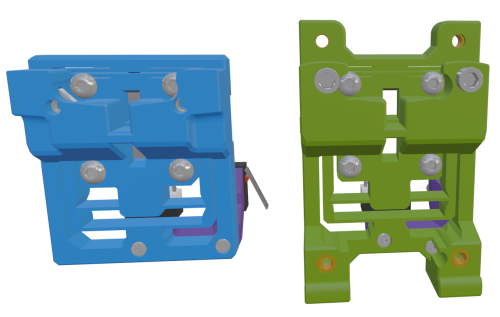
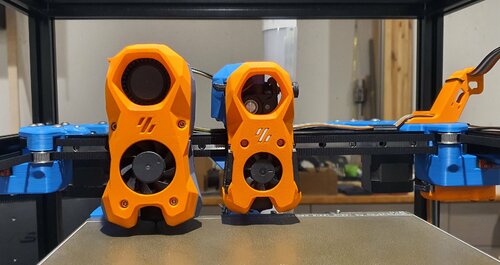
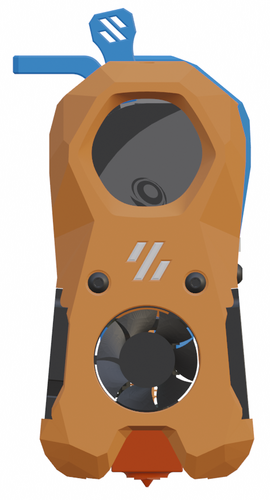
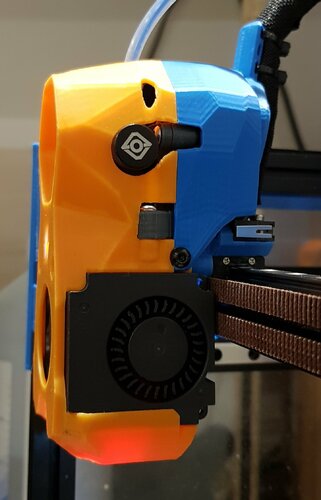
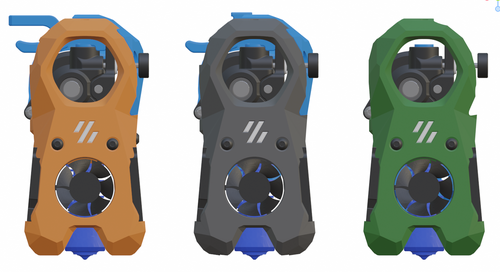
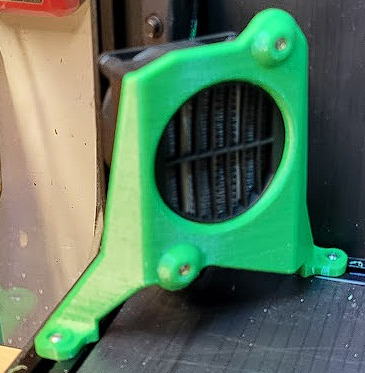
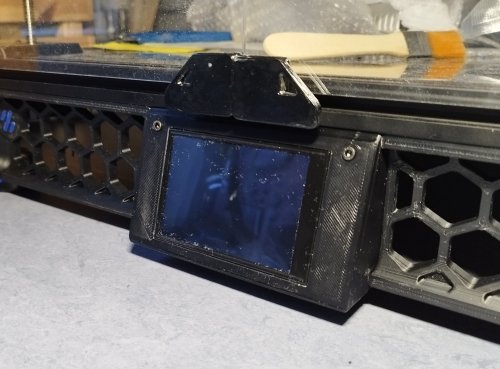
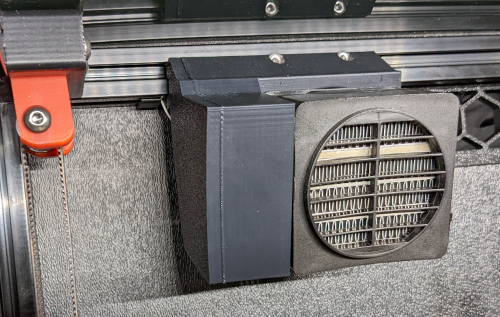

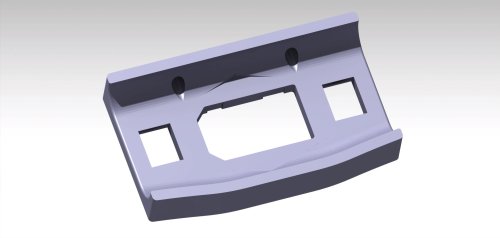
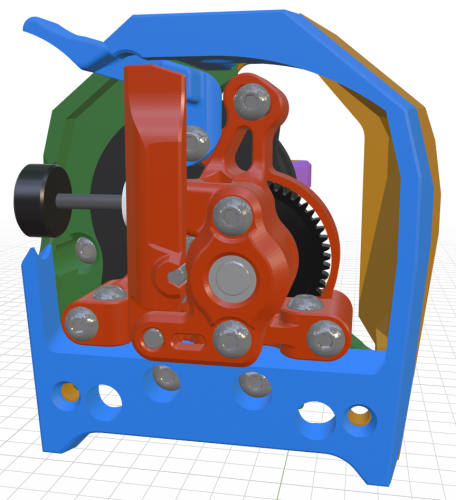
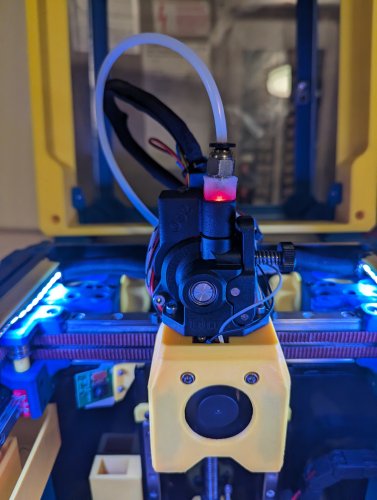
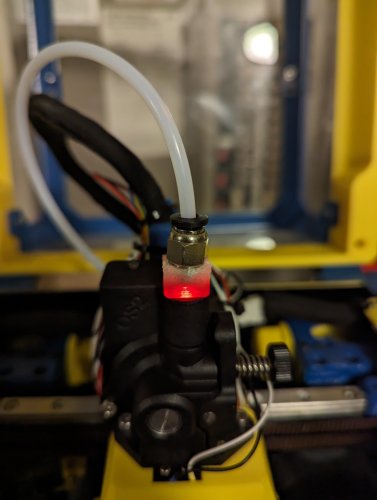
.thumb.jpeg.7e304b8df1a04269547fb8f007d6b863.jpeg)
